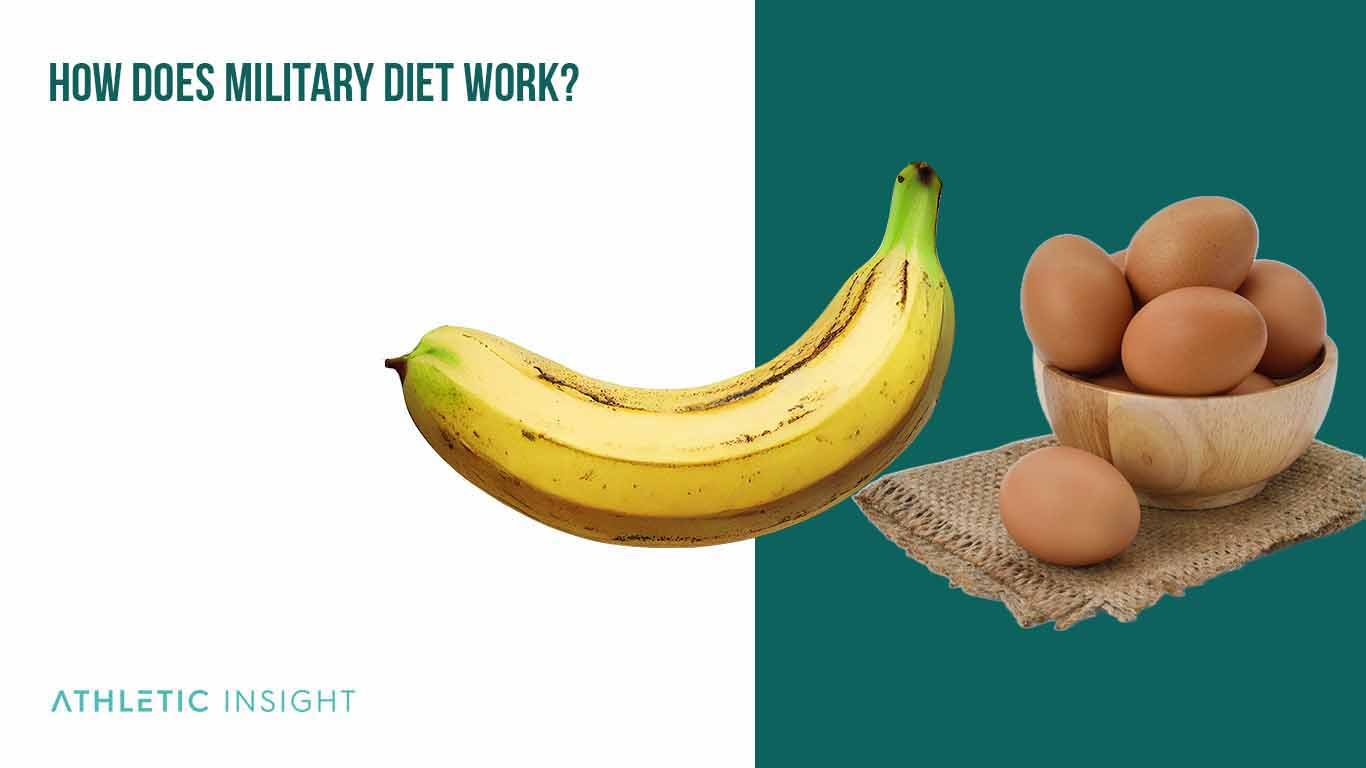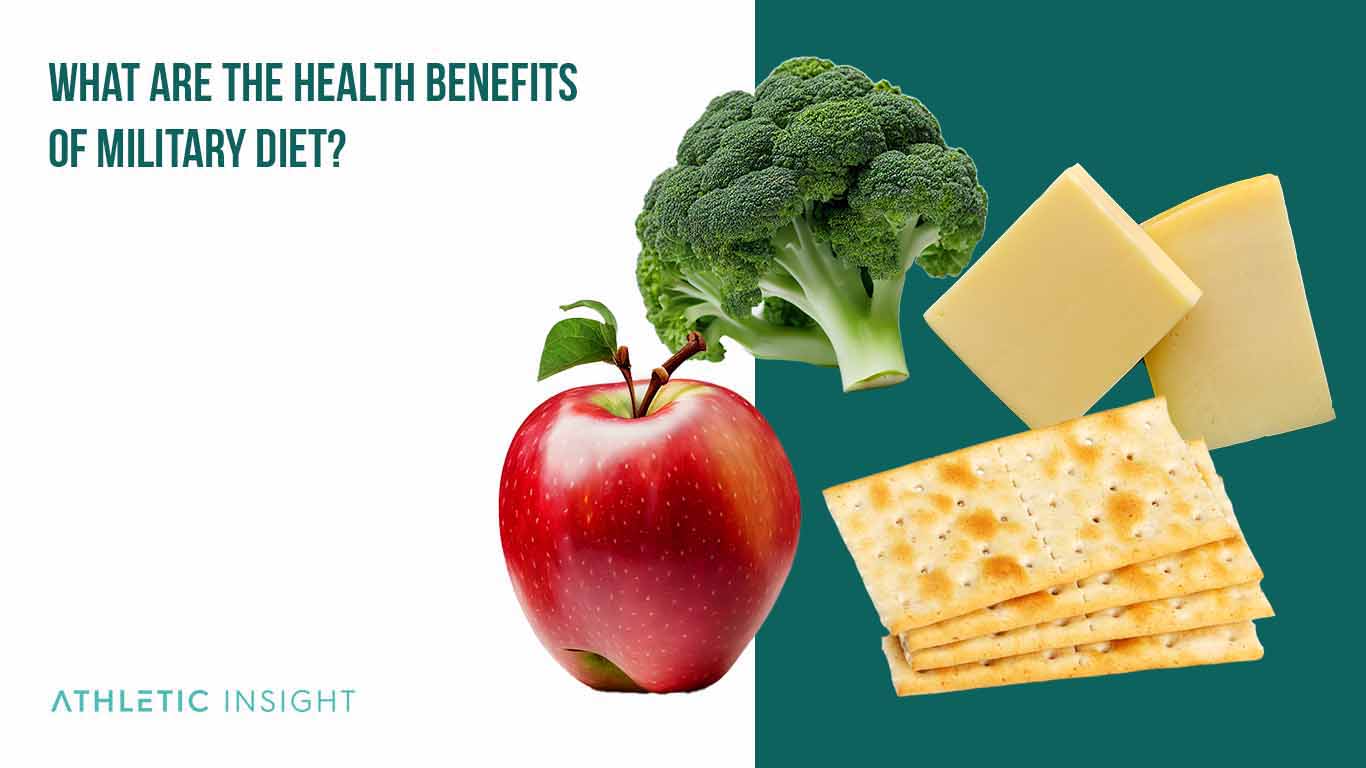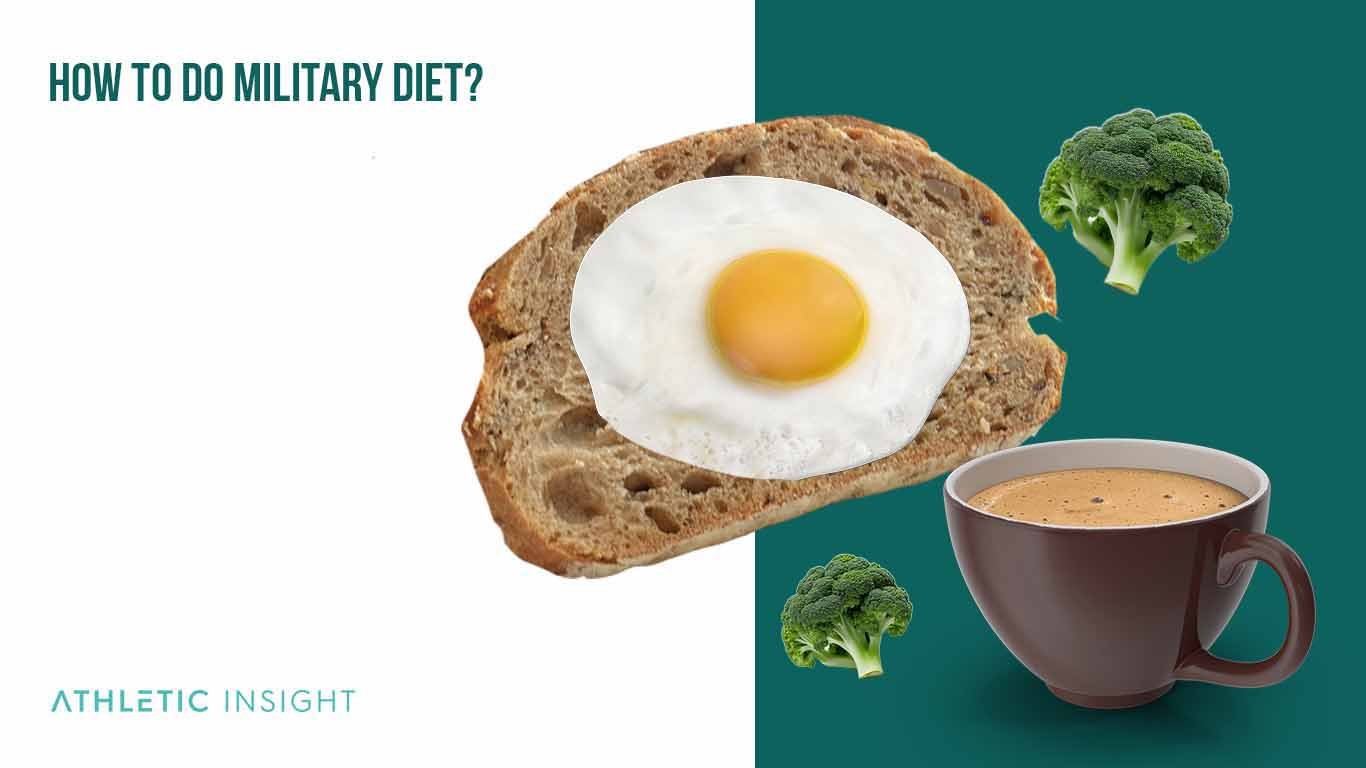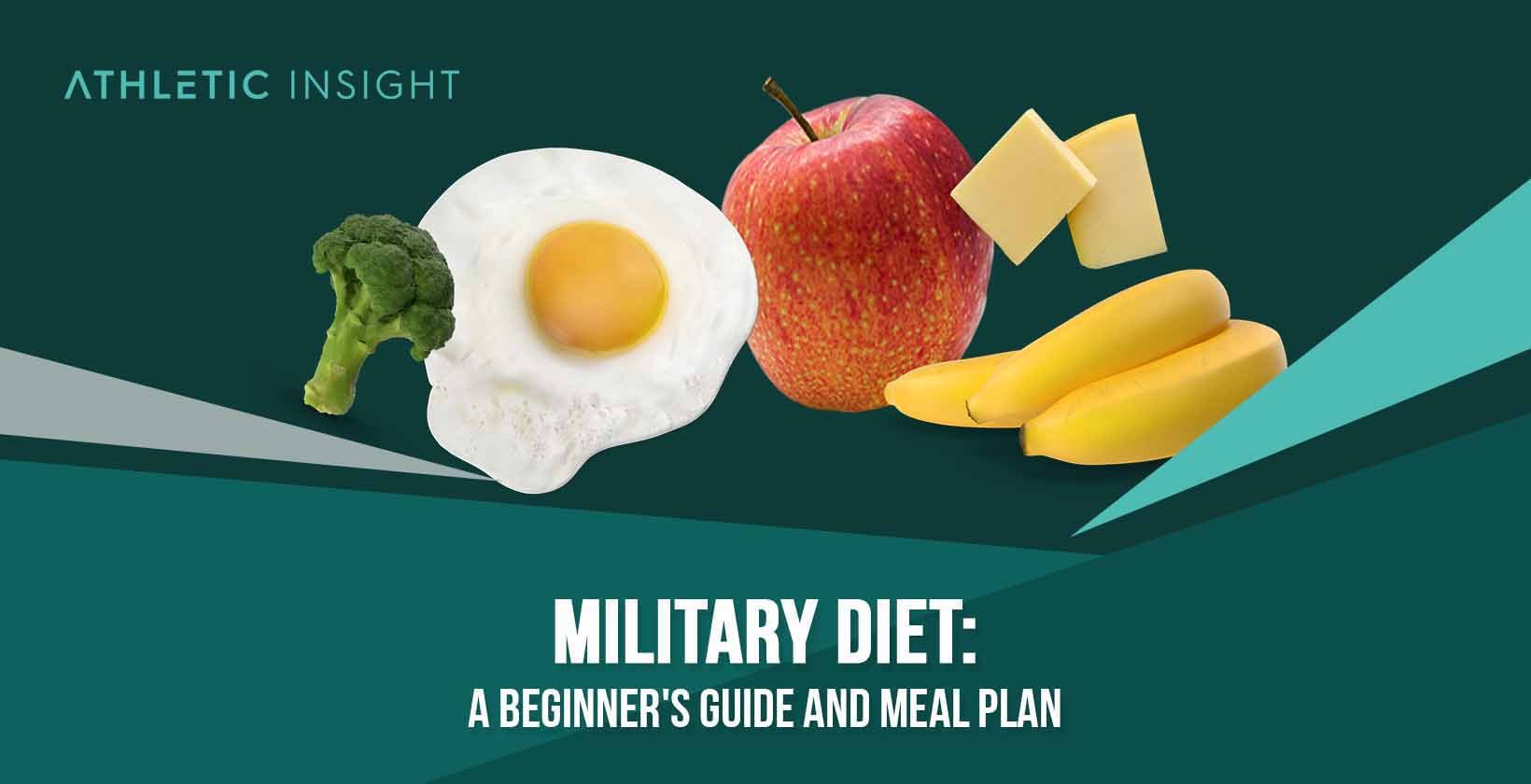The military diet is a popular short term weight loss diet that is achieved through calorie deprivation. If you are looking for a new diet that allows for you to lose weight quickly, the Military Diet is worth considering. This article will break down precisely what the diet entails as well as its reported health benefits and some sample days of what it’s like abiding by the food restrictions for the 3-day Military Diet.
What Is the Military Diet?
The Military Diet is a low-calorie-low-fat crash diet made to help people drop pounds quickly. It’s not an easy diet to stick to, but for those who do, the benefits include weight loss, less bloating, and, if the diet is followed for several cycles, a leaner, more body.
The military weight loss diet is important because it can help you cultivate self-discipline to stop relying on fatty, processed, unhealthy foods and commit to a better diet and improved lifestyle.
There is only one Military Diet. Although it has gone by several names over the years, including the Army Diet, Cleveland Clinic Diet, Mayo Clinic Diet, and Navy Diet, the foods and procedures of the diet haven’t changed.
How Does the Military Diet Work?
In the Military Diet, you follow a specific daily eating plan that includes a limited set of foods and a certain number of calories. You stick to the low-calorie phase for three days, then take four days off and eat slightly more calories. Repeat until you’ve reached your goal weight.

The Military Diet works through simple calorie limitation, the age-old logic that if you take in less than you burn, you will drop pounds. This diet keeps the calories relatively low so that even a person who is not physically active will be in a caloric deficit while following it.
Some people believe combining foods in the diet creates a chemical reaction that helps the body burn calories faster, but there is no solid scientific evidence.
There are also claims that the diet can help you lose ten pounds in a week. Once again, this isn’t a likely result of this diet. You need to burn about 3500 calories to lose one pound. Unless you’re running multiple marathons each week – which would not be recommended on a low-calorie diet – you won’t burn 35,000 calories!
What Are the Health Benefits of the Military Diet?
There are many benefits to the healthy Military Diet, but the most significant benefit is weight loss. If you’re overweight, go on the Military Diet, and stick to it, you will likely lose weight. When overweight people lose weight, they generally feel better and reap health benefits like reduced risks of heart disease, diabetes, and other obesity-related illnesses.

Some people report feeling less bloated and having more energy in the initial days of the Military Diet. This effect is usually due to a combination of factors. The foods in this diet are simple and unprocessed, the portions are small, and caffeine is part of the diet.
The best Military Diet weight loss plan can also help you pay attention to calorie count and get in the habit of keeping track of what you eat. Even when you’re off the diet, you can still use what you learned while on it to plan meals and understand approximately how many calories you’re taking in.
What Are the Health Risks of the Military Diet?
The Military Diet won’t hurt you if you keep it up for a limited time – one week to one month -unless you exert yourself heavily. If you overdo physical exercise while not taking in enough calories, symptoms include feeling shaky, dizzy, confused, and faint.
The main health risks of the Military Diet usually happen only if you maintain the diet beyond a temporary period. A diet like this doesn’t have enough calories or nutrients to sustain energy and health, so if you continue the diet for too long, symptoms of malnourishment are possible.
Another health risk of the Military Diet that people don’t often discuss is constipation. Low-fiber diets like this can slow down your elimination system, making you feel bloated and uncomfortable even though you’re not taking in much food.
One way to avoid constipation while on the Military Diet is to switch up the proteins, replacing meat portions with beans or tofu, at least sometimes. Using whole-wheat bread instead of white bread can also help add some extra fiber.
How To Do the Military Diet?
Following the Military Diet time to eat schedule is not complicated. The rules and foods are laid out for you clearly and simply.

For three days, you follow the strict portion of the diet, where you eat a minimal number of foods in specific amounts, adding up to about 1,000 calories per day. Once the three days are over, you can switch to a slightly more varied diet, as long as you keep it low-cal, around 1500 calories. Repeat this cycle until you reach your desired weight.
What Is the Best Duration for Military Diet?
The strict caloric restriction portion of the Military Diet is not meant to be adhered to for more than three days at a time. So when you see numbers like 7, 10, or 14 days, you follow the 3 days on/4 days off cycle for that number of days.
- 3-Day Military Diet
- 7-Day Military Diet
- 14-Day Military Diet
- 10-Day Military Diet
1. 3-Day Military Diet
The strict portion of the Military Diet runs in 3-day intervals. If you want to get rid of excess water weight and feel lighter for an event, you can do one three-day stint only.
2. 7-Day Military Diet
The original Military Diet is set up for a 7-day cycle. As mentioned above, the strictest calorie restriction phase lasts for three consecutive days. You’re meant to eat a slightly more robust diet the other four days of the week, but not by much. You still need to adhere to a specific military diet food list and caloric limits. The diet gives examples of meals you can eat during these four days off.
3. 14-Day Military Diet
The 14-day Military Diet means you follow the diet of three days on/four days off for two consecutive weeks. This plan can lead to noticeable weight loss for most people.
4. 10-Day Military Diet
The ten-day Military Diet involves following the diet in a cycle. It is three days on/four days off/three days on, totaling ten days of the diet. Once again, this plan allows for a good chance of weight loss.
Ultimately, the best duration for the Military Diet depends on what your goals are and how strong your willpower is. It’s a challenging diet to follow, so staying on it for two weeks will take focus and perseverance.
Due to its limited options, most people don’t stay on the Military Diet for more than one month (4 cycles). Start with the Military Diet to build your self-discipline, then segue into a more varied eating plan that is part of an overall healthier lifestyle after a couple of weeks.
What Are the Foods That You Can Eat While on a Military Diet?
The Military Diet plan menu allows you small portions of meat, dairy, and certain types of vegetables, as well as ice cream and fruit for a treat. Here are some acceptable foods to eat while on a Military Diet.
- Cottage Cheese
- Meat
- Bananas
- Vanilla ice cream
- Hot dogs
- Eggs
- Bread
- Grapefruit
- Broccoli
- Apple
- Greek Yogurt
- Tuna
- Cheddar Cheese
- Green beans
- Black coffee
- Green Tea
- Herbal tea
You can modify this diet to suit vegan and vegetarian needs. Plant-based protein takes the place of meat, and dairy alternatives take the place of ice cream and cottage cheese. For your v or vegan Military Diet shopping list, you can add the following.
- Tofu
- Chickpeas
- Vegan Ice Cream
- Soy or Almond Milk
The alternative kinds of milk function as vegan substitutes for cottage cheese on the Military Diet. You can also use plain bagged nuts like almonds to substitute meat protein. Portions sizes will be outlined in the Military Diet PDF.
There are other ways to substitute foods on the Military Diet. For example, you can swap the half can of tuna out for a similar amount of lean meat. You can eat two rice cakes instead of toast for breakfast and lunch if you’re gluten-free.
What Are the Foods That You Should Avoid While on a Military Diet?
The real Military Diet is very structured. Any foods other than those listed in the plan, or comparable substitutions, should be avoided while on this diet. If you go off-book, you can easily consume too many calories and derail your hoped-for results.
Who Should Do the Military Diet?
The Military Diet is best for people who want to lose a few pounds quickly for an event like a wedding or vacation. It is a good choice for people who dislike cooking and don’t mind bland foods.
Keep in mind the military weight loss diet will only work for those who have solid willpower and can follow the strict plan to the letter without caving in, snacking, etc.
Physically small people will have an easier time adhering to the diet because they burn fewer calories. If you’re a taller, larger-framed individual, you need more calories to function, so you will find yourself constantly hungry, tired, and “hangry” on this diet.
What Are the Best Recipes for Military Diet?
During the 3-day strict phase of the Military Diet, you eat a minimal number of foods in limited quantities. It’s very plain, so there isn’t much in the way of recipes for that diet phase.
However, during your four off days, you can get more creative and make tasteful, low-calorie meals that satisfy some of your cravings. Here are some simple recipes.
- Tuna Pita Pocket: Mix 1/2 can of tuna with 1/4 cup white beans, one teaspoon of olive oil, and one teaspoon of lemon juice. Serve in a 4-inch whole-wheat pita with two leaves of lettuce. You can add a serving (one cup) of grapes as a side.
- Banana & Honey Smoothie: Blend (in a blender) 1 cup of plain soy milk, one banana, one tablespoon of honey, two tablespoons of oatmeal, and one tablespoon of flax seeds.
- Cajun Chicken With Rice: Sprinkle 1 teaspoon of dried Cajun seasoning on 4 ounces of chicken breast. Bake or grill. Saute 1 clove of garlic, 1/2 cup chopped onion, 1 bell pepper, in 2 teaspoons of olive oil. Add 2 tablespoons of tomato paste and a few sprinkles of Tabasco sauce. Add 3/4 cup of precooked brown rice. Serve the chicken on top of the rice.
What Is a Sample Military Diet Plan?
The Military Diet plan ingredients stick with a regimented set of foods during its three-day first phase. Here’s what the Military Diet menu looks like.
Military Diet DAY 1:
- Breakfast: 1/2 Grapefruit, 1 Slice of Toast, 2 Tablespoons of Peanut Butter, 1 cup Coffee or Tea (with caffeine)
- Lunch: 1/2 Cup of Tuna, 1 Slice of Toast, 1 cup Coffee or Tea (with caffeine)
- Dinner: 3 ounces of any type of meat, 1 cup of green beans, 1/2 banana, 1 small apple, 1 cup of vanilla ice cream
Military Diet DAY 2:
- Breakfast: 1 egg, 1 slice of toast, 1/2 banana
- Lunch: 1 cup of cottage cheese, 1 hard-boiled egg (or cooked however), 5 saltine crackers
- Dinner: 2 hot dogs (without bun), 1 cup of broccoli, 1/2 cup of carrots, 1/2 banana, 1/2 cup of vanilla ice cream
Military Diet DAY 3:
- Breakfast: 5 saltine crackers, 1 slice of cheddar cheese, 1 small apple
- Lunch: 1 hard boiled egg (or cooked however you like), 1 slice of toast
- Dinner: 1 cup of tuna, 1/2 banana, 1 cup of vanilla ice cream
What Should You Eat for the Remaining Four Days of the Military Diet?
For the remaining four days of the Military Diet, you can expand your choices, but for best Military Diet results, the diet recommends you don’t eat more than 1500 calories per day.
The Military Diet’s official website offers meal suggestions for the four off days. These tasty options include Yogurt Parfait, Chicken Salad Wrap, Shrimp, and Zucchini Pasta. While it’s still healthy food, and the portions are relatively small, these meals will seem like an indulgence compared to the three strict dieting days.
What Are the Facts About the Military Diet?
- The Military Diet is a calorie-restricted, cycled diet meant to be followed for brief stints to achieve quick weight loss.
- The Military Diet is not affiliated with or endorsed by any branch of the armed forces. The name of the diet was chosen based on the fact that it is a challenging plan to follow and requires a large amount of discipline.
- There are many Military Diet testimonials and Military Diet before and after available online. But you won’t know how well the diet will do for you until you try it.
- Men need to add 100 more calories to the Military Diet, while women can follow it as-is.
How Long Should You Follow a Military Diet?
You can follow the Military Diet for a week for short-term results. The weight loss results are mainly water weight when followed for this short period. For some people, this is sufficient.
Some people choose to follow the Military Diet for up to a month. They claim this yields excellent weight loss results, but when someone finally goes off the diet, they can’t expect to maintain their goal weight if they go back to their old eating habits. It’s essential to pursue a healthy relationship with food and follow a common-sense, balanced lifestyle that includes exercise.
Is Military Diet Considered a Healthy Diet?
Yes, the Military Diet is healthy. None of the foods in the diet are bad for you. On the one hand, the Military Diet is simple and doesn’t call for processed foods – aside from the hot dogs, which you can swap for a different protein. It allows vegetables and fruits and gives you some probiotics from Greek yogurt.
On the other hand, it is not a complete diet by any stretch. It lacks quite a lot of fiber and nutrients. The fruits and vegetables allowed are not varied and are not in large enough quantities to provide the vitamins and fiber necessary to stay nourished.
The biggest issue with this diet is that it doesn’t provide enough calories for an adult to function daily. It’s not meant to be a long-term, sustainable diet.
Is The Military Diet Expensive?
No, the Military Diet is not expensive. It is very economical because it uses low-cost, everyday foods like bananas, canned tuna, peanut butter, and plain bread. The small portion sizes allowed on this diet ensure that you can stretch food products further.
In addition to being economically sensible, the foods are also accessible. Nearly all foods on the Military Diet shopping list are readily available at a local grocery, convenience store, or dollar store. You don’t need to live near a health food shop or spend money on special shakes, bars, or meal delivery plans.
What Does a Military Diet PDF Involve?
A Military Diet PDF includes a detailed plan breakdown, with each day’s eating guidelines. Also included are recommendations for what to eat on the plan’s four “off” days and substitution options. The official diet page of the Military Diet, militarydiet.com, has PDFs available for free to anyone interested.
How to Find a 3D Military Diet Printable Plan?
A google search will turn up many different kinds of Military Diet PDFs that are 3-D and printable. These colorful printouts can help you follow the diet better through visual examples of food and portion sizes.
What Are the Similar Diets to Military Diet?
There are several low-calorie, short-term diet plans that function in a similar way to the Military Diet. Here are a few Military Diet substitutes examples.
- The Body Reset Diet: The Body Reset Diet was developed by a celebrity personal trainer and is touted as a plan that can help you lose weight fast. It lasts for 15 days, which are broken up into 5-day intervals. As a low-calorie diet, it leans heavily on shakes. For the first phase, you drink three daily shakes, one for each meal. The subsequent steps include replacing shakes with solid meals.
- The HMR Plan: The HMR diet is a low-calorie plan also relies on shakes for its initial phase and measured portions of fruit and vegetables. As the weeks go on, you can move on to a more varied diet that is still healthy and low in excessive fat.
- GM Diet: Automaker General Motors developed the GM diet in the mid-20th century. The company wanted to help its employees drop pounds and be healthier. This is a 7-day diet that tightly restricts calories and food choices, allowing dieters to eat from only one low-calorie food group for each day of the week.



